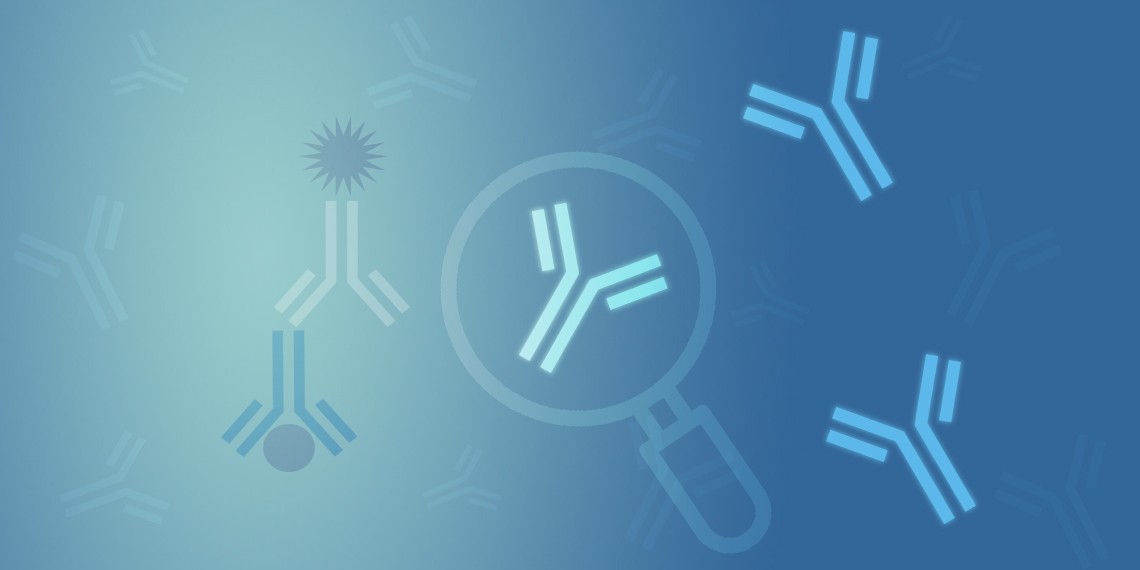- Introduction
- Use search engines to find and compare available antibodies
- Match the antibody type to your application
- Buy from companies that will work with you
- Look for antibodies with complete validation data
- Select antibodies that have been validated for your application
- Check to ensure additives are compatible with your application
- Review publications, but carefully scrutinize antibody data and references
Introduction
Antibodies are widely used for applications that range from flow cytometry and immunohistochemistry to western blotting and ELISA. Even though antibodies are central to basic research as well as drug development and diagnostics, quality concerns remain high, and finding an antibody that works well for a specific application is a formidable challenge.
One source of the antibody quality problem is that it is not easy to generate a high-performing antibody. Production of monoclonal and polyclonal antibodies relies on an animal’s immune response, which is unpredictable and can vary from animal to animal even when they have the same genetic background. Some proteins do not elicit a strong immune response, others are too immunogenic, and yet others share too much homology with non-target proteins to yield a highly specific antibody. As part of the Human Protein Atlas project, Berglund et al. (2008) quantified their antibody production success rate; 49% of their 9,000 internally generated antibodies failed validation.
Part I — selecting the best antibodies to test for your application
The first step to finding an antibody can be the most daunting — identifying antibodies that could work for your application. Product information and validation data can be difficult to decipher, and with hundreds of vendors to choose from it becomes difficult to know when a search has been exhaustive. The following guidelines are meant to simplify the process of identifying high-quality antibodies.
Tune in in June for Part II to learn how best to validate antibodies after you have purchased them and in July for Part III to see what information to include in publications to ensure that antibody quality and results can be evaluated by the reader.
For further reading on the issues facing researchers and what they and antibody suppliers can do to ensure proper antibody validation, read Validating Antibodies — the Good, the Bad, and the Necessary.
Bio-Rad’s Solution for Better Antibodies
Learn more about Bio-Rad’s solution for better antibodies with antibody validation.
References
Berglund L et al. (2008). A genecentric Human Protein Atlas for expression profiles based on antibodies. Mol Cell Proteomics 7, 2,019–2,027.
Bradbury A and Plückthun A (2015). Reproducibility: Standardize antibodies used in research. Nature 518, 27–29.
Elliott S et al. (2006). Anti-Epo receptor antibodies do not predict Epo receptor expression. Blood 107, 1,892–1,895.
Johnson M (2012). Antibody shelf life/how to store antibodies. Mater Methods 2, 120.
Prassas I and Diamandis EP (2014). Translational researchers beware! Unreliable commercial immunoassays (ELISAs) can jeopardize your research. Clin Chem Lab Med 52, 765–766.
Rosenblatt M (2016). An incentive-based approach for improving data reproducibility. Sci Transl Med 8, 336ed5.
Veronique Neumeister, Department of Pathology, Yale University School of Medicine, New Haven, CT
Poulomi Acharya and Anna Quinlan, Bio-Rad Laboratories, Inc., Hercules, CA
First published as: Acharya P et al. (2017). The ABCs of finding a good antibody: How to find a good antibody, validate it, and publish meaningful data. F1000Res 2017 6, 851.
Bio-Rad is a trademark of Bio-Rad Laboratories, Inc.


